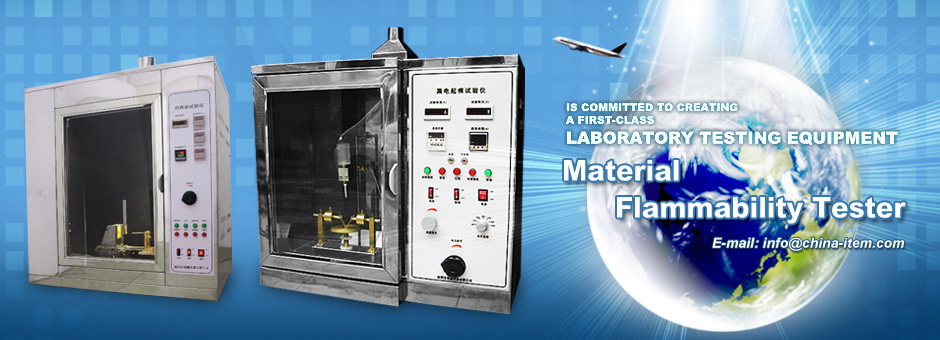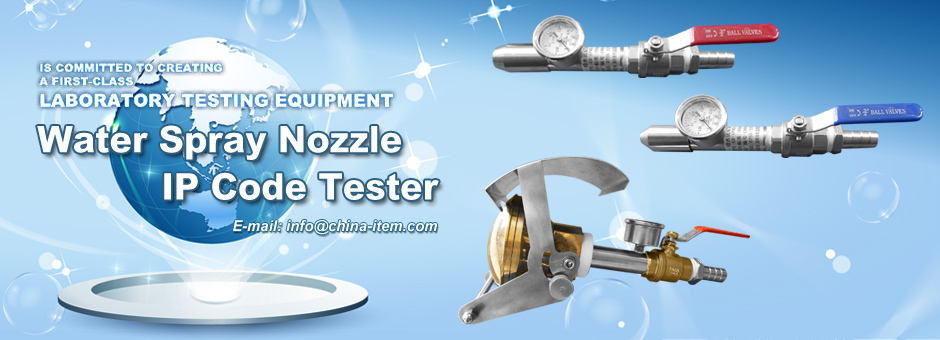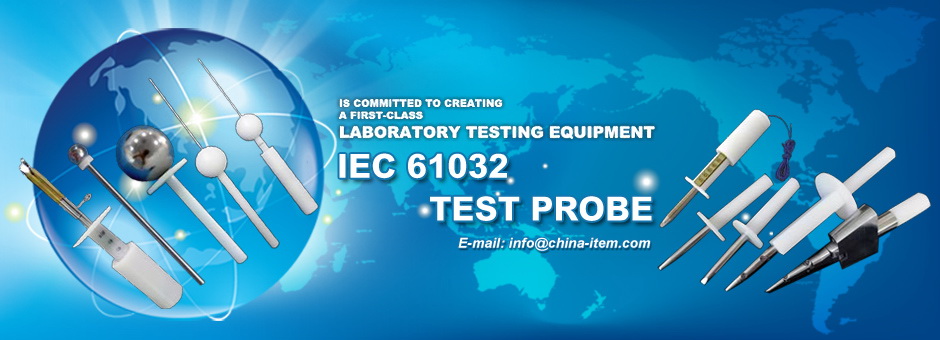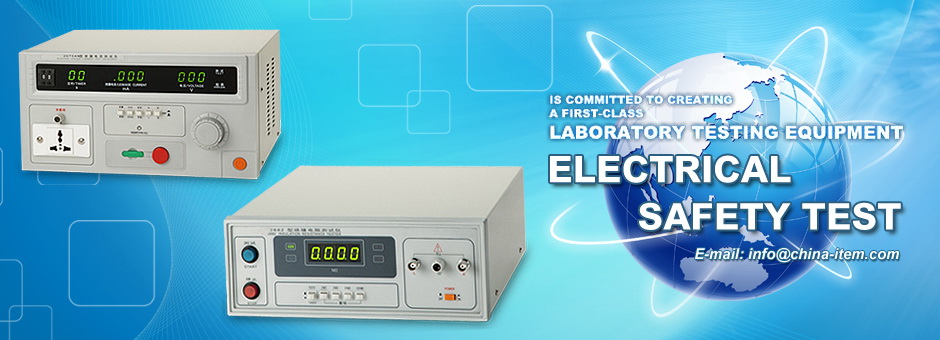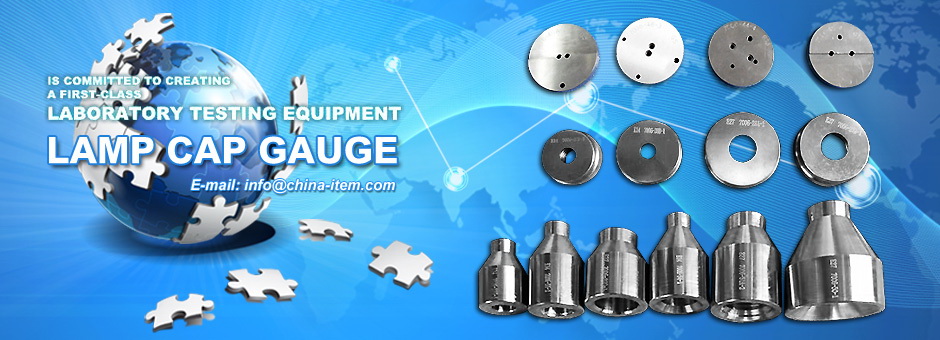contact us
products
- Main Products
- IEC Test Probe
- UL Test Probe
- Material Flammability Tester
- IP Code Tester
- Impact Test Apparatus
- Security Testing Machine
- Lamp Cap Gauge Tester
- Lampholders Gauge Tester
- Plug & Socket Tester
- Electrical Safety Tester
- LED Test Instruments
- Environmental Test Equipment
- Instrument Accessories
- Weighing Sensor
- Others Testing Equipment
technical articles
Company News
Small household kitchen appliances are diverse in types and usages. Consumers are typically concerned for the safety of these products when in use. At present, UL and IEC standards for small household kitchen appliances are not yet harmonized as harmonization efforts often involve the difficult task of addressing differences between the standards being harmonized. Differences in national codes, laws and practices may result in national differences from the IEC requirements. As UL standards are maintained and updated, effort is made to avoid creating unintentional national differences to minimize obstacles for future standards harmonization.
In order to help manufacturers of small appliances gain access to global markets smoothly, this article will explain the differences between UL and IEC standards, in terms of description, definitions and testing requirements.
UL and IEC Standards
The Standard IEC 60335-1 published by IEC (International Electrotechnical Commission) addresses general requirements for household and similar electrical appliances — safety. It shall be used with the relevant part 2 of IEC 60335. The part 2 standards are companion documents to the part 1, making reference to the part 1 by affirming, deleting, modifying or adding requirements to part 1. For household kitchen application, there are four part-2 Standards; namely, IEC 60335-2-9, IEC 60335-2-13, IEC 60335-2-14 and IEC 60335-2-15 (see Table 1).| Standards | Applicable Products | Applicable UL Standards | |
| IEC 60335-2-9 | Grills, toasters and similar portable cooking appliances. It also applies to waffle iron, bread makers, ovens, barbecues, griddles, etc. | For these three kinds of product types in the U.S. market, the applicable standards are: | |
| UL 1026 for Electric Household Cooking and Food Serving Appliances | |||
| IEC 60335-2-13 | Deep fat fryers, frying pans and similar appliances. | UL 1083 for Household Electric Skillets and Frying-Type Appliances | |
| IEC 60335-2-15 | Appliances for heating liquids, coffee makers, kettles, steam cookers, yoghurt makers, egg boilers, etc. | UL 1082 for Household Electric Coffee Makers and Brewing-Type Appliances | |
| IEC 60335-2-14 | Food processors, grinders, slicing machines, knife sharpeners, centrifugal juicers, etc. | For the U.S. market, the applicable standard is UL 982 for Motor-Operated Household Food Preparing Machines | |
|
Table 1. Applicable Products of IEC 60335-2 and Applicable UL Standards |
|||
1. Definitions
Class II (IEC) vs Class 2 (NEC®/UL)
“Class II” in IEC standards stands for the appliance construction in which protection against electric shock does not rely on basic insulation only but in which additional safety precautions are provided, such as double insulation or reinforced insulation, and there being no provision for protective earthing or reliance upon installation conditions. Once an appliance is in compliance with all Class II insulation requirements of the relevant IEC end-product standards, the following symbol shall be used to indicate the appliance as Class II equipment.
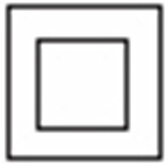
For UL, this symbol also indicates that the equipment is double insulated. However, once this symbol is marked on appliance, not only the UL end-product standard (e.g. UL 982) is applicable, but also the additional standard, UL 1097, Double Insulation Systems for Use in Electrical Equipment, is applied.
“Class2”is aU.S.terminology for isolated electrical power sources having limited voltage and energy capacity so as to reduce the risk of electric shock and fire hazard. Requirements for voltage and energy capacity limitation are indicated in the U.S. National Electrical Code® and numerous UL standards, including UL 1310, Class 2 Power Units. “Class2”is not related to double insulation at all.
Grounding vs Earthing
The meaning of the terms “Grounding” and “Earthing” are identical. The former is aU.S.term referenced in the National Electrical Code® and the latter is the IEC term. Similarly, the terms “ungrounded” and “grounded” used in UL standards are equivalent to “live” and “neutral” in IEC standards.
Per IEC requirements, including those appliances with supply cords to be replaced by qualified technical person, the protective earthing terminal shall be indicated by the following symbol.

This symbol can also be found in UL Listed household appliance, but it is not common, since grounding is not required for these cord-connected products. In both the UL and IEC standards, these products are not required to be grounded or double insulated (Class 0). However, in many countries where the supply source has a potential of more than 150 V to ground, such as inEurope, these products are required to be grounded or double insulated. In addition to the IEC standard, grounded products (Class I) with nonmetallic enclosures must be evaluated for double insulation (Class II Construction).
2. Leakage Current Test
The equipment for measuring leakage current for UL and IEC requirements appear to be different based on the specific wording in the standards. However, actual practice is not very different.
The type of instrument to measure leakage current is clearly defined in standards UL 1026, UL 1082, UL 1083 and UL 982. Leakage current meters suitable for “threshold of perception” leakage current measurements are commercially available, typically described as meeting the requirements of UL standards. The standards do not currently anticipate high frequency and non-sinusoidal leakage current and therefore are silent on making such measurements. Where such leakage current is expected, the measuring instrument must comply with the requirements of UL 101 (Standard for Leakage Current for Appliances).
In the past, leakage current values have been given in milliamperes (mA), however, the term Measurement Indication Unit (MIU) is being adopted in conformance with the latest edition of the American National Standard for Leakage Current for Appliances, ANSI C101-1992. The term MIU refers to the numerical indication of a defined measurement instrument.
The MIU coincides numerically with milliamperes only at low frequencies. At high frequencies, the number of milliamperes flowing through the instrument can be significantly higher than the indication in MIU’s. Therefore, the term MIU has been selected instead of milliamperes for measurement of leakage current.
The IEC 60335 requirements are based upon the requirement of IEC 60990, where the leakage current meter shall be capable of responding to peak readings with frequencies of up to1 MHz. The test instrument utilized for the UL appliance standards, measuring mA's at low frequencies, does not fulfill IEC 60335, requiring MIU measurements at higher frequencies; however, UL 101 is consistent with IEC 60990 and 60335.
3. Dielectric Strength Test
For appliances rated 120 V, other than an electric knife, the test potential of the UL Dielectric Voltage Withstand test is typically 1000 Vac for a period of one minute. If this appliance employs a motor rated at more than ½ horsepower, the test potential is 1000 V plus twice rated voltage (e.g. 240 Vac for 120 V appliance). The IEC requirement makes no distinction for the test voltage (1000 V for basic insulation) based on the horsepower.
Before conducting a Dielectric Voltage Withstand test, the test equipment tripping current sensitivity should be set. However, this is a difference between the UL requirements and IEC requirements on how to get it done. Sensitivity is set at UL by using a calibrated resistor of 120 K ohm connected across the output of the unloaded test equipment. For a product subjected to 1000 V potential, the tripping current will thus be 8.3 mA. The tripping current in IEC requirements is not calibrated by an external resistor, but rather, in accordance with Table 5 of IEC 60335-1, it is based on the short circuit and release energies of the test equipment transformer (100 mA tripping current for a 120 V appliance).
Generally, for small household kitchen appliances, the test voltage applied per the UL Dielectric Voltage Withstand Test is based upon the rated voltage and horsepower while the IEC Electric Strength Test is based upon the rated voltage and the type of insulation.4. Impact Test
The UL and IEC enclosure impact tests have distinct methods.
There are two types of UL impact tests: drop impact test and ball impact test. The type of test to be applied is dependent on the intended use of appliance. If it is a hand-held appliance, drop impact test is applicable; otherwise ball impact test is applicable. To determine the impact energy for the ball impact, the material of enclosure has to be taken into account first, basically0.75 ft-lbf (1.0 J) for plastic and1.5 ft-lbf (2.0 J) for metal enclosures of counter supported appliances. The impact test may be conducted on a single sample or on up to three samples, however, each sample must withstand at least three impacts.
For IEC requirement, appliance is checked by applying three blows to the appliance by means of the spring hammer with impact energy of 0.5 J according to IEC 60068-2-75. Only one sample is subjected to the impact test.
Rating for Motor-Operated Appliance
Rated input is marked on IEC 60335 compliant appliances by means of showing either rated power or rated current. However, cord-connected UL Listed appliances rated more than 50 W have to be marked with rated current once the full-load power factor is 80% or less. Marking of rated power is optional.
Non-Metallic Materials Evaluation
Except where included in the end-product standard, the additional standard UL746C, Polymeric Materials — Use in Electrical Equipment Evaluations, is required for evaluating of non-metallic enclosure materials. Typically, investigation includes checking the rating of flammability, relative temperature index (RTI), thickness and pigment. In addition, the enclosure is subjected to the Mold Stress Relief Distortion, Impact, Strain Relief after Oven, Severe Conditions, Input after Oven and Abnormal Operation Tests to determine the acceptability of a non-metallic enclosure material.
In accordance with UL746C, if the material is located within0.8 mmof uninsulated live parts or12.7 mmof arcing parts, the material must have adequate properties for Comparative Tracking Index (CTI), Hot-Wire Ignition (HWI) and High Current Arc Resistance to Ignition (HAI). The HWI and HAI ratings reflect resistance to ignition from electrical energy sources, but UL does relate them to flammability classification. There is a trade-off between resistance to ignition from electrical sources versus ignition from a flame. The greater resistance to one, the less needed for the other. The table shown as follows can help to determine the acceptance of material.
|
|
Flammability | |||
| V-0 | V-1 | V-2 | HB | |
| HWI | ≤ 4 | ≤ 3 | ≤ 2 | ≤ 2 |
| HAI | ≤ 3 | ≤ 2 | ≤ 2 |
≤ 1 |
For IEC requirements, ball pressure test, glow-wire test, and needle-flame test are three significant tests for verifying compliance of plastic materials used in appliance.
The following are the main differences between the investigation of nonmetallic materials for UL and IEC.
a. Ball Pressure Test vs. Mold Stress Relief Distortion Test
The IEC Ball Pressure Test is a material test which tests for softening of the material via a 1-hour oven test while balancing the Ball Pressure Apparatus on a sample of the material. The UL Mold Stress Relief Distortion Test is an end-product test which tests for stress points in the molded part resulting in cracking or warping of the enclosure via a 7-hour oven test.
b. Required Flammability Rating
IEC 60335 requires all nonmetallic materials likely to be ignited or propagate a flame to be subjected at a minimum to the Glow-Wire Test at550°Cor be rated HB40. The IEC requirements then require Glow-Wire Testing at higher temperatures for parts in close proximity to or supporting connections, depending on the use of the product and generally do not recognize lammability ratings except where the Needle Flame Test is applicable. For UL, the required flammability rating of the enclosure is dependent upon the use of the product. For example, the enclosure material of a portable attended use product must be rated at least HB, while portable unattended products require V-2 minimum rated materials. While a material classified as HB is allowed to have a burn rate of80 mmper minute in material thicknesses under3 mm, HB40 requires a burn rate of less than40 mmper minute. HB40 and HB classified materials are both allowed a burn rate of40 mmper minute for thicknesses greater than3 mm.
c. Glow-Wire Test vs. Hot Wire Ignition (HWI)
The UL HWI Test is a material test, while the Glow-Wire Test is an end-product test. UL746Callows the use of the Glow-Wire Test as an alternative to having a material with an adequate HWI rating.
d. Direct Contact with Live Parts or Support of Connections
UL746Cincludes requirements for parts in direct contact with or close proximity to uninsulated live parts. These consist primarily of determining if the material has the required HAI, HWI and CTI. As indicated previously, HAI and HWI are dependent upon the flame rating of the material. For IEC, only parts supporting or in close proximity to connections are required to be further evaluated by means of Glow-Wire Test. The temperature of the Glow-Wire Test is dependent upon the use of the end-product and the current carried in the connection. These materials may also make use of the Glow-Wire Ignition Temperature (GWIT) and Glow-Wire Flammability Index (GWFI).
e. Close Proximity
For UL, this term is applicable to parts within0.8 mmof an uninsulated live part in accordance with UL746C. For IEC, it is applicable to parts with3 mmof parts supporting connections.




